Grow Watermelon at Home? Absolutely! Imagine biting into a juicy, sweet watermelon you nurtured from a tiny seed, right in your own backyard. It’s not just a summer dream; it’s an achievable reality with a few clever tricks and a little DIY spirit. For centuries, watermelons have been symbols of summer abundance and refreshing sweetness, enjoyed in cultures around the globe. From ancient Egypt, where they were buried with pharaohs, to modern-day picnics, watermelons hold a special place in our hearts (and stomachs!).
But let’s be honest, the thought of grow watermelon at home can seem daunting. We often think of sprawling farms and expert growers. That’s where this guide comes in! I’m here to show you that you don’t need acres of land or a green thumb of legend to enjoy homegrown watermelons. Whether you have a spacious garden or just a sunny balcony, I’ll share simple, effective DIY hacks to help you cultivate these delicious fruits.
Why bother with the effort? Because the taste of a homegrown watermelon, ripened to perfection under your care, is simply unmatched. Plus, you’ll know exactly what went into growing it, avoiding any unwanted chemicals or pesticides. So, let’s dive in and discover the secrets to successfully growing watermelons at home, one DIY trick at a time!
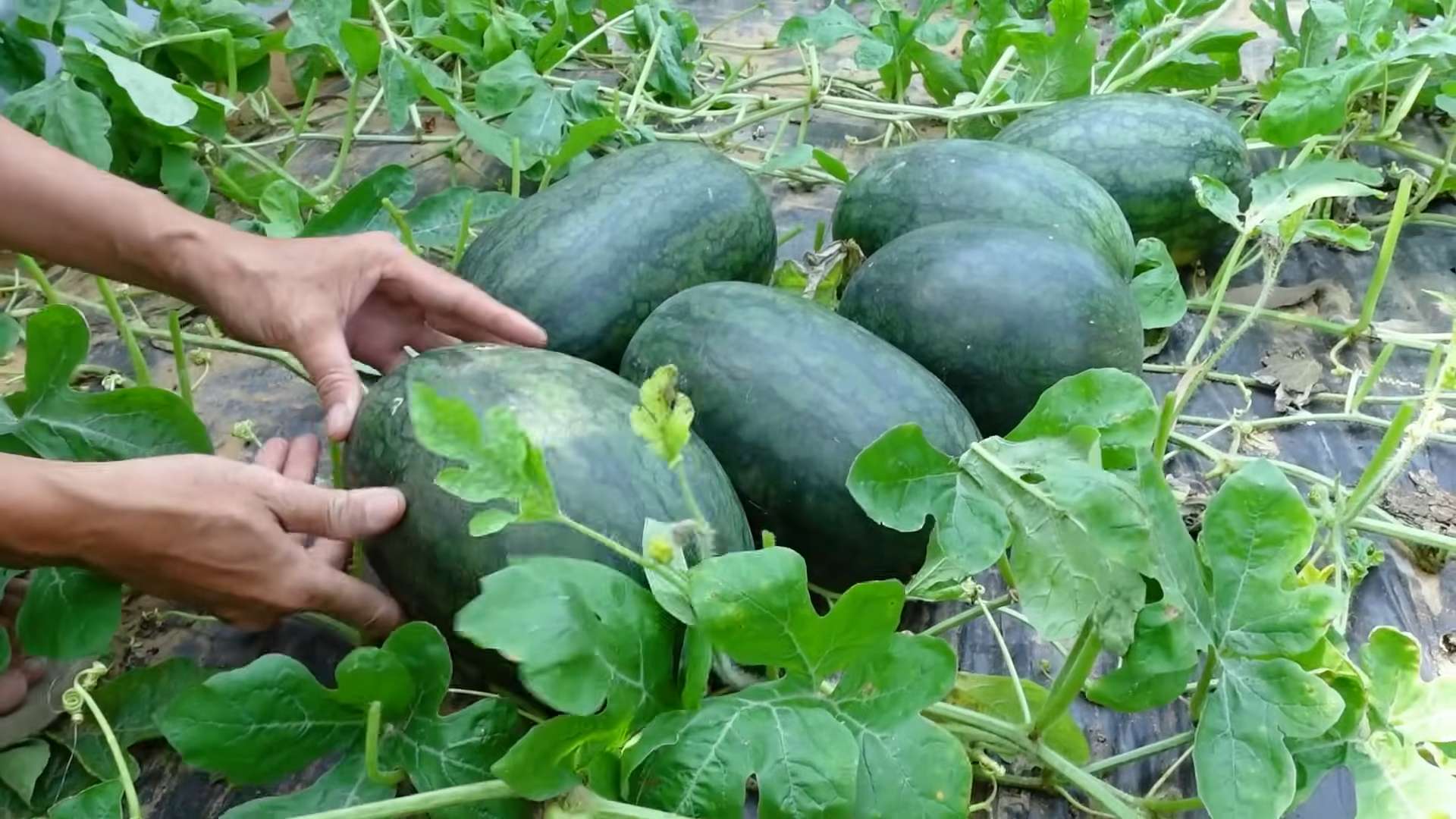
Grow Your Own Juicy Watermelons: A Beginner’s Guide
Okay, so you want to grow watermelons at home? Awesome! It’s totally doable, even if you don’t have a sprawling farm. I’m going to walk you through everything you need to know, from choosing the right variety to harvesting that sweet, refreshing fruit. Trust me, there’s nothing quite like biting into a watermelon you grew yourself!
Choosing the Right Watermelon Variety
First things first, let’s talk about watermelon varieties. Not all watermelons are created equal, and some are definitely better suited for home gardens than others. Consider your climate, space, and personal preferences when making your choice.
* Space Considerations: If you have limited space, look for bush or dwarf varieties. These are bred to be more compact and manageable.
* Climate: Different varieties have different heat requirements. Check the seed packet or online descriptions to make sure the variety you choose is suitable for your growing zone.
* Days to Maturity: This is the number of days it takes from planting to harvest. Shorter days to maturity are ideal for cooler climates with shorter growing seasons.
* Personal Preference: Do you prefer red or yellow flesh? Seeded or seedless? Big or small? There’s a watermelon out there for everyone!
Here are a few popular varieties that are relatively easy to grow:
* Sugar Baby: A classic, small, and sweet watermelon that matures quickly. Great for smaller gardens.
* Bush Sugar Baby: An even more compact version of Sugar Baby, perfect for containers.
* Crimson Sweet: A larger, oblong watermelon with a deep red flesh and excellent flavor.
* Black Diamond: A large, dark green watermelon with a sweet, juicy red flesh.
* Yellow Doll: A unique watermelon with a bright yellow flesh and a sweet, honey-like flavor.
Getting Started: Planting Your Watermelon Seeds
Now that you’ve chosen your variety, it’s time to get those seeds in the ground! Watermelons need warm soil to germinate and thrive, so timing is key.
* Timing is Everything: Watermelons are warm-season crops and are very sensitive to frost.
* Starting Indoors: If you live in a cooler climate with a short growing season, start your seeds indoors about 4-6 weeks before the last expected frost.
* Direct Sowing: If you live in a warmer climate, you can direct sow your seeds directly into the garden after the last frost when the soil temperature reaches at least 70°F (21°C).
* Choosing the Right Location: Watermelons need at least 6-8 hours of direct sunlight per day. Choose a sunny spot in your garden with well-drained soil.
* Soil Preparation: Watermelons prefer slightly acidic soil with a pH of 6.0-6.8. Amend your soil with compost or well-rotted manure to improve drainage and fertility.
Step-by-Step Planting Instructions:
1. Starting Seeds Indoors:
* Prepare Your Seed Starting Mix: Use a good quality seed starting mix.
* Sow the Seeds: Fill small pots or seed trays with the seed starting mix. Sow the seeds about 1 inch deep.
* Water Gently: Water the soil gently to moisten it.
* Provide Warmth: Place the pots or trays in a warm location, such as on a heat mat or near a sunny window. The ideal germination temperature is 80-85°F (27-29°C).
* Keep the Soil Moist: Keep the soil consistently moist, but not soggy.
* Harden Off Seedlings: Once the seedlings have developed a few true leaves, gradually acclimate them to outdoor conditions over a period of 7-10 days before transplanting them into the garden. This process is called “hardening off.”
2. Direct Sowing Seeds:
* Prepare the Soil: Make sure the soil is loose, well-drained, and amended with compost.
* Create Mounds or Hills: Watermelons grow best on slightly raised mounds or hills. This helps with drainage and warms the soil more quickly.
* Sow the Seeds: Sow 4-6 seeds per hill, about 1 inch deep.
* Water Gently: Water the soil gently to moisten it.
* Thin Seedlings: Once the seedlings have emerged and have a few true leaves, thin them to the strongest 2-3 plants per hill.
Caring for Your Watermelon Plants
Once your watermelon plants are established, it’s important to provide them with the care they need to thrive.
* Watering: Watermelons need consistent moisture, especially during fruit development. Water deeply and regularly, especially during hot, dry weather. Aim for about 1-2 inches of water per week. Avoid overhead watering, as this can lead to fungal diseases. Drip irrigation is ideal.
* Fertilizing: Watermelons are heavy feeders. Fertilize them regularly with a balanced fertilizer, such as 10-10-10. Apply fertilizer according to the package directions. You can also side-dress your plants with compost or well-rotted manure.
* Weeding: Keep the area around your watermelon plants free of weeds. Weeds compete with watermelons for water and nutrients.
* Mulching: Mulch around your watermelon plants with straw, hay, or black plastic. Mulch helps to retain moisture, suppress weeds, and warm the soil.
* Pollination: Watermelons need to be pollinated in order to produce fruit. Bees are the primary pollinators of watermelons. If you don’t have many bees in your area, you may need to hand-pollinate your plants.
* Hand-Pollination: To hand-pollinate, use a small paintbrush to transfer pollen from the male flowers to the female flowers. Female flowers have a small, immature watermelon at the base of the flower.
* Pest and Disease Control: Watermelons can be susceptible to a variety of pests and diseases, such as aphids, squash bugs, cucumber beetles, and powdery mildew. Monitor your plants regularly for signs of pests or diseases. Treat any problems promptly with appropriate organic or chemical controls.
Training and Pruning (Optional)
While not strictly necessary, training and pruning your watermelon plants can help to improve air circulation, reduce disease, and encourage larger fruit.
* Training: You can train your watermelon vines to grow along a trellis or fence. This can help to save space and keep the fruit off the ground.
* Pruning: Pruning can help to improve air circulation and encourage larger fruit. Remove any dead, damaged, or diseased leaves or vines. You can also prune away some of the smaller, non-fruiting vines to direct more energy to the developing fruit.
Harvesting Your Watermelons
The moment you’ve been waiting for! Knowing when to harvest your watermelons is crucial for getting that perfect, sweet flavor.
* Days to Maturity: Check the seed packet or online description for the days to maturity for your variety. This will give you a general idea of when to expect your watermelons to be ripe.
* Visual Cues: Look for these visual cues to determine if your watermelon is ripe:
* The Tendril: The tendril closest to the fruit should be brown and dry.
* The Ground Spot: The ground spot (the spot where the watermelon rests on the ground) should be yellow or cream-colored.
* The Skin: The skin should be dull and waxy, not shiny.
* Sound Test: Thump the watermelon with your knuckles. A ripe watermelon will sound hollow.
* Harvesting: Once you’ve determined that your watermelon is ripe, use a sharp knife to cut it from the vine. Leave a few inches of stem attached to the fruit.
Enjoying Your Homegrown Watermelon
Congratulations! You’ve successfully grown your own watermelons. Now it’s time to enjoy the fruits (or rather, the vegetables!) of your labor.
* Storage: Store your watermelons in a cool, dry place. Whole watermelons can be stored for up to 2 weeks. Cut watermelons should be stored in the refrigerator.
* Serving: Watermelon is delicious on its own, but it can also be used in a variety of recipes. Try adding it to salads, smoothies, or cocktails. You can even grill it!
Growing watermelons at home is a rewarding experience. With a little bit of planning and effort, you can enjoy fresh, juicy watermelons all summer long. Happy gardening!
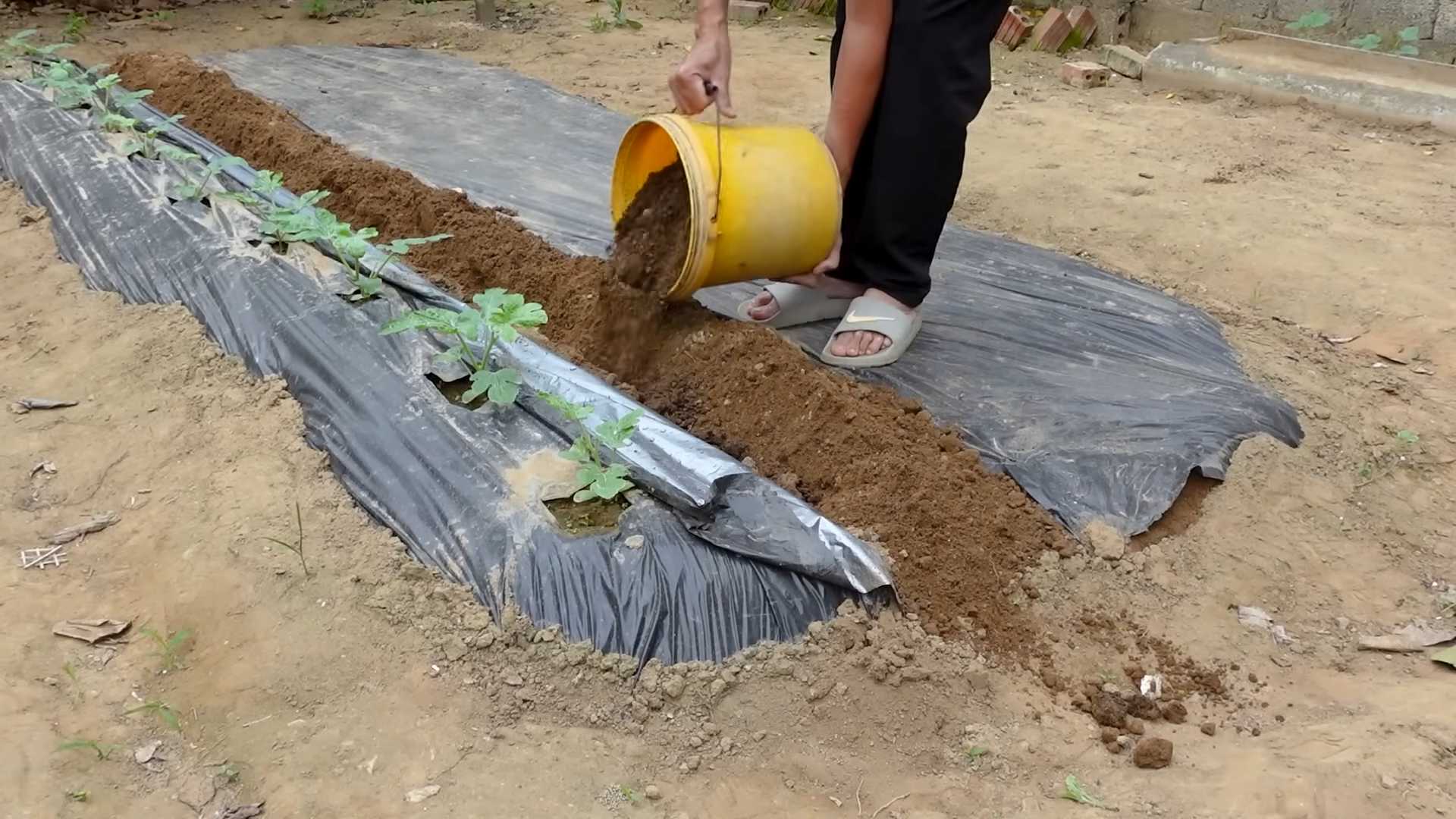
Conclusion
So, there you have it! Growing watermelons at home might seem daunting at first, but with a little patience, the right techniques, and this simple DIY trick, you’ll be sinking your teeth into juicy, homegrown goodness before you know it. This isn’t just about saving money; it’s about experiencing the unparalleled satisfaction of nurturing a plant from seed to fruit, knowing exactly what went into its growth, and enjoying a flavor that store-bought watermelons simply can’t match.
This DIY method, focusing on [Specific DIY trick mentioned in the article, e.g., “soil amendment with compost tea” or “hand-pollination techniques”], is a game-changer because it addresses some of the most common challenges faced by home gardeners. It boosts nutrient availability, improves pollination rates, and ultimately leads to larger, sweeter, and more abundant watermelons.
But don’t stop there! Experiment with different watermelon varieties. Try growing smaller, personal-sized watermelons like Sugar Baby or explore unique heirloom varieties with different colors and flavors. You can also adapt this DIY trick to other vining crops like cantaloupe or honeydew melons. Consider companion planting with basil or marigolds to deter pests naturally. For those in cooler climates, starting your seeds indoors several weeks before the last frost can give your watermelons a head start.
Growing watermelons at home is an incredibly rewarding experience, and this DIY trick is your secret weapon for success. It’s time to get your hands dirty, embrace the process, and enjoy the fruits (or rather, the watermelons!) of your labor.
We’re confident that you’ll be amazed by the results. Don’t just take our word for it – give it a try! And most importantly, we want to hear about your experience. Share your photos, tips, and stories in the comments below. Let’s build a community of watermelon-growing enthusiasts and learn from each other’s successes (and even the occasional mishaps!). Happy growing!
Frequently Asked Questions (FAQs)
Q: What is the best time to start growing watermelons at home?
A: The timing depends on your climate. Watermelons need warm weather and a long growing season (70-90 days). In warmer regions, you can direct sow seeds after the last frost. In cooler climates, start seeds indoors 4-6 weeks before the last expected frost and transplant them outdoors once the soil has warmed up to at least 70°F (21°C). Make sure the danger of frost has passed. Using a soil thermometer is a great way to ensure proper soil temperature.
Q: What kind of soil is best for growing watermelons?
A: Watermelons thrive in well-drained, sandy loam soil that is rich in organic matter. The soil should have a pH between 6.0 and 6.8. Amend heavy clay soils with compost, aged manure, or other organic materials to improve drainage and aeration. Raised beds can also be beneficial, especially in areas with poor drainage.
Q: How much sunlight do watermelons need?
A: Watermelons need at least 6-8 hours of direct sunlight per day to produce sweet, juicy fruits. Choose a sunny location in your garden where the plants will receive ample sunlight throughout the growing season. Insufficient sunlight can lead to smaller, less flavorful watermelons.
Q: How often should I water my watermelon plants?
A: Watermelons need consistent moisture, especially during fruit development. Water deeply and regularly, aiming for about 1-2 inches of water per week. Avoid overhead watering, which can promote fungal diseases. Use a soaker hose or drip irrigation to deliver water directly to the roots. Reduce watering as the fruits ripen to prevent them from cracking.
Q: How do I know when my watermelons are ripe?
A: Determining ripeness takes practice, but here are a few indicators:
* **The tendril closest to the fruit turns brown and dries up.** This is a reliable sign.
* **The underside of the watermelon (where it rests on the ground) turns from white to a creamy yellow.** This is often called the “ground spot.”
* **The watermelon sounds dull and hollow when you thump it.** This takes some experience to recognize the difference.
* **The rind becomes dull and less shiny.**
Don’t rely on just one indicator; use a combination of these signs to determine ripeness.
Q: What are some common pests and diseases that affect watermelons?
A: Common pests include aphids, squash bugs, vine borers, and cucumber beetles. Diseases include powdery mildew, fusarium wilt, and anthracnose. Regularly inspect your plants for signs of pests or diseases. Use organic pest control methods such as insecticidal soap, neem oil, or hand-picking pests. Ensure good air circulation and avoid overhead watering to prevent fungal diseases. Crop rotation can also help prevent soilborne diseases.
Q: Can I grow watermelons in containers?
A: Yes, you can grow watermelons in containers, but you’ll need a large container (at least 20 gallons) with good drainage. Choose a compact or bush-type watermelon variety that is suitable for container growing. Provide adequate support for the vines and fruits. Water and fertilize regularly, as container-grown plants tend to dry out and deplete nutrients more quickly.
Q: How do I hand-pollinate watermelons?
A: Watermelons have separate male and female flowers. If you’re not seeing fruit set, you may need to hand-pollinate. Identify the female flowers by the small, immature watermelon at the base of the flower. Use a small paintbrush or cotton swab to collect pollen from the male flowers (which have only a stem behind the flower) and transfer it to the stigma of the female flowers. Do this in the morning, when the flowers are open.
Q: What kind of fertilizer should I use for watermelons?
A: Watermelons benefit from a balanced fertilizer with a higher phosphorus content to promote root development and flowering. Use a fertilizer with an NPK ratio of 10-10-10 or 5-10-5. Apply fertilizer at planting time and again when the vines begin to run and when the fruits start to develop. Avoid over-fertilizing with nitrogen, which can lead to excessive foliage growth at the expense of fruit production. Compost tea is also a great organic fertilizer option.
Q: How can I prevent my watermelons from cracking?
A: Watermelon cracking is often caused by inconsistent watering. Avoid letting the soil dry out completely and then overwatering. Maintain consistent moisture levels, especially as the fruits ripen. Mulching around the plants can help retain moisture in the soil. Also, protect the fruits from excessive sun exposure, which can also contribute to cracking.


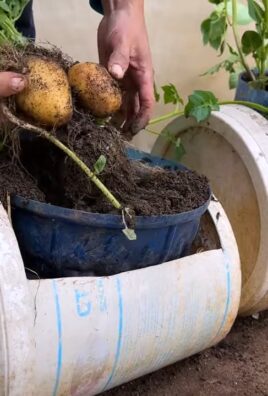
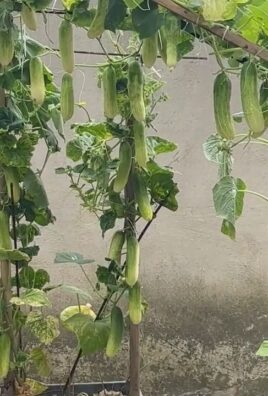
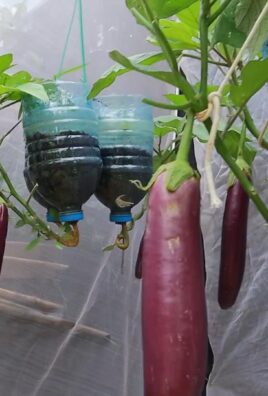
Leave a Comment